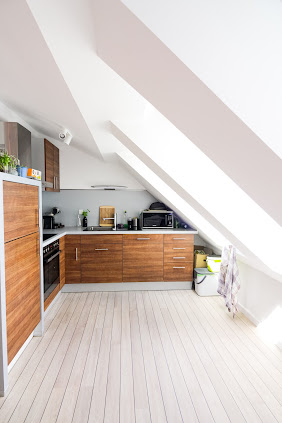Step Up to Space: Selecting the Right Attic Access Ladder for Your Home
Transforming your attic into an efficiently used space not only enhances your home’s overall functionality but also considerably increases its value. A crucial step in achieving this transformation is selecting a suitable attic access ladder, a gateway to optimizing your attic’s potential. The journey to finding the right ladder involves understanding your needs, exploring various ladder types, considering material durability, ensuring safety and comfort, and finally, choosing between a DIY or professional installation.
Identifying Needs and Options
The first step in selecting the right attic access ladder is a thorough assessment of your specific requirements. Consider the spatial constraints of your home, how often the attic will be accessed, and the nature of the items to be stored or moved through this access point. Ladder types such as folding, telescoping, and scissor each offer distinct advantages. For instance, folding ladders are excellent for tight spaces, while telescoping ones provide a sleek, minimalist look. Scissor ladders, on the other hand, are revered for their durability and modern aesthetic.
Materials and Durability
Durability and safety are directly influenced by the material of your attic ladder. Wood, aluminum, and steel are the most common materials, each offering unique benefits. Wooden ladders provide a classic look but may require maintenance to sustain their condition over time. Aluminum ladders strike a balance between lightweight design and rust resistance, making them a popular choice for their longevity. Steel ladders are well-suited for heavy-duty use, offering unmatched durability but at a higher weight and cost.
Safety and Comfort Features
Safety cannot be overstated when it comes to attic access solutions. Ladders equipped with safety mechanisms, such as locking features to prevent accidental deployment, are essential. Stability is another crucial aspect; a sturdy ladder minimizes the risk of accidents. Additionally, features designed for comfort and ease of use, including handrails, anti-slip treads, and even insulation for temperature control, contribute significantly to the overall safety and functionality of the attic access ladder.
Installation Considerations
Deciding between a DIY installation or hiring a professional is an essential consideration that hinges on the complexity of the installation process and the homeowner's skill level. While many attic ladders are designed with the DIY enthusiast in mind, certain situations may necessitate professional assistance, especially if structural modifications are required. Pre-installation assessments such as measuring the available space and checking for obstructions are vital steps irrespective of who performs the installation.
For more tips on selecting the right attic access ladder and maximizing your attic space, visit our website at https://atticplus.com.au/.




Mga Komento
Mag-post ng isang Komento